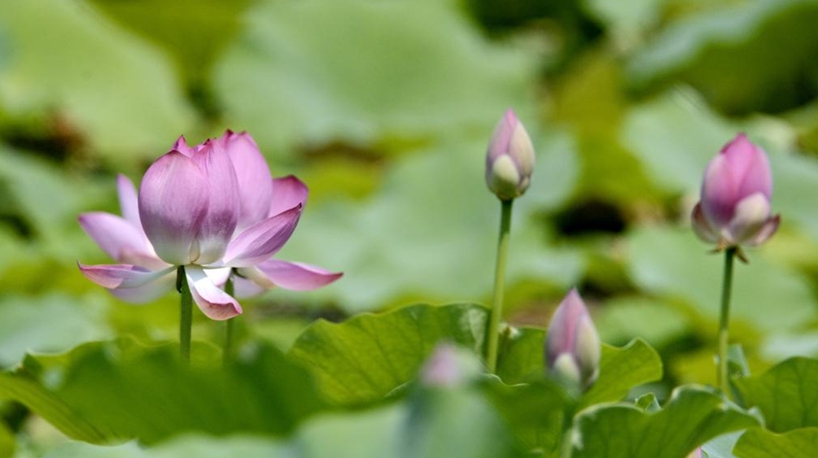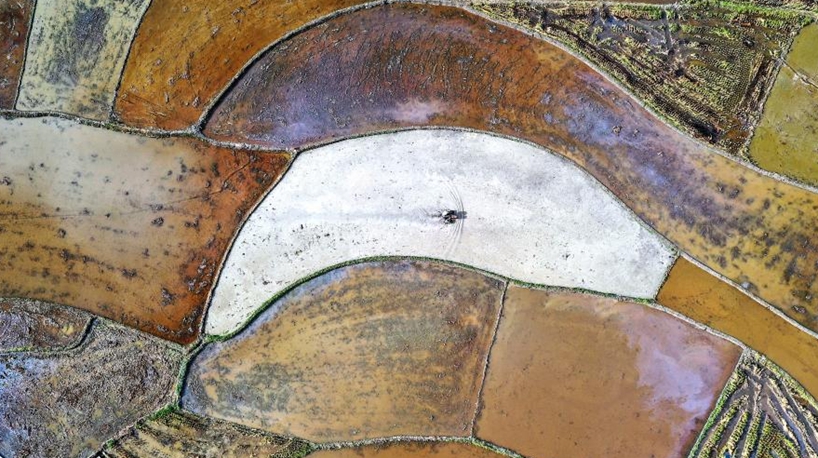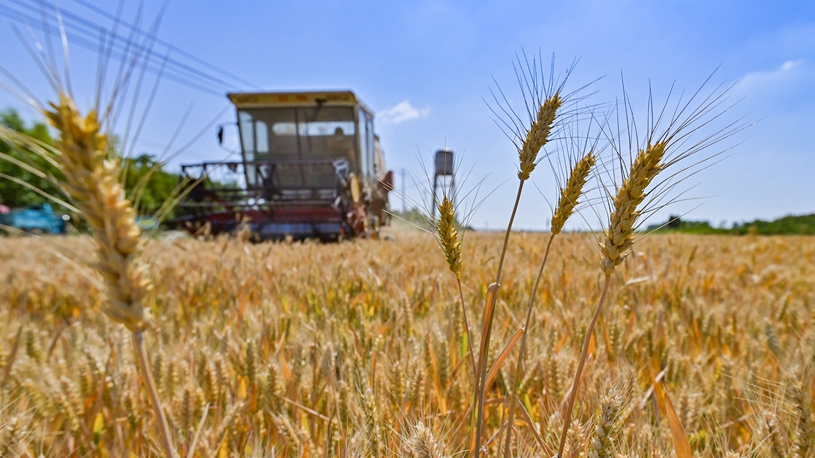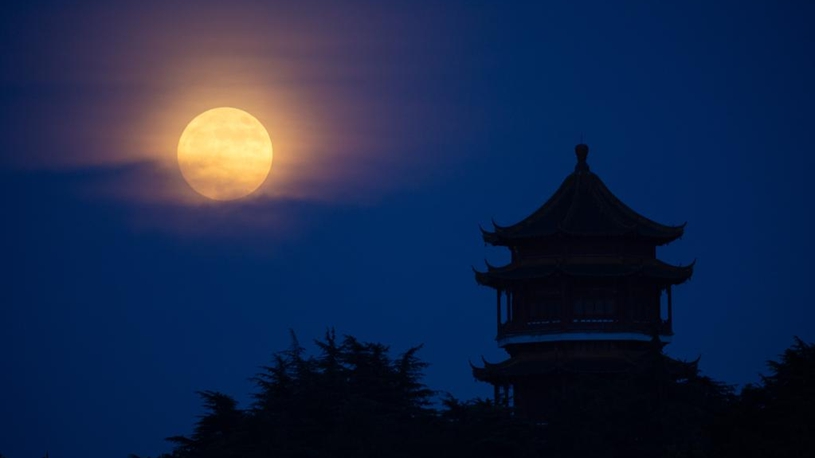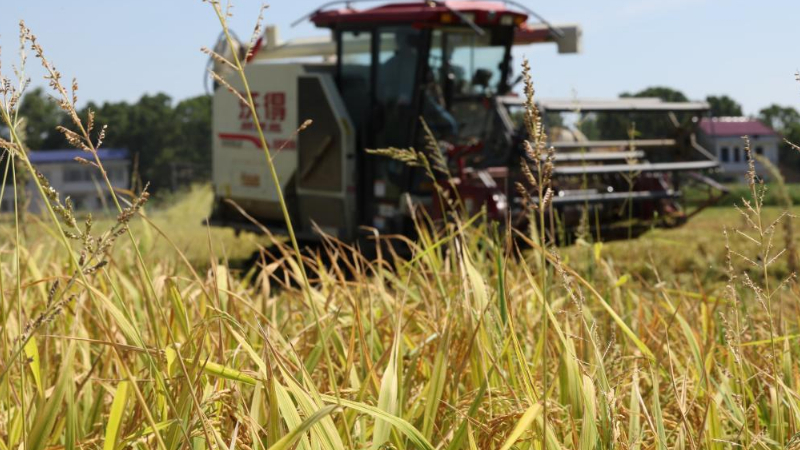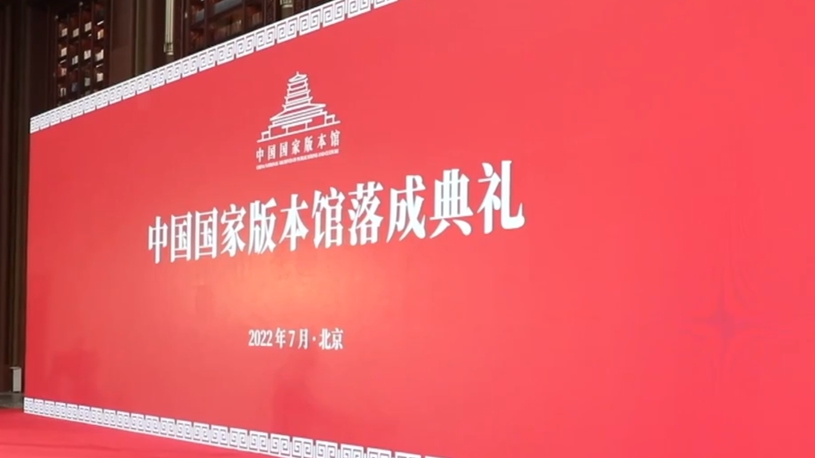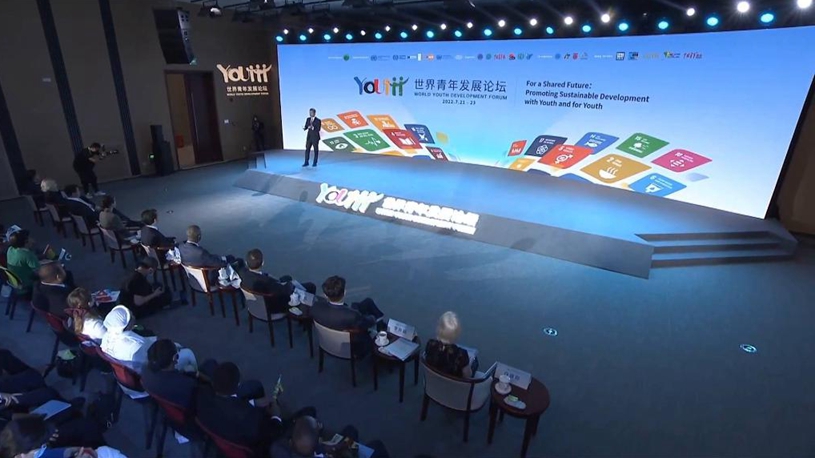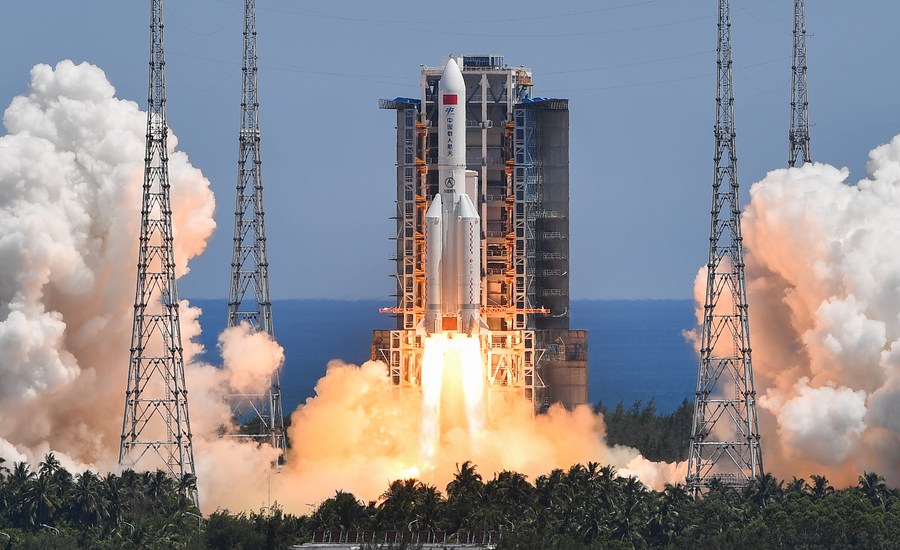
A Long March-5B Y3 carrier rocket, carrying Wentian lab module, blasts off from the Wenchang Spacecraft Launch Site in south China's Hainan Province, July 24, 2022. (Xinhua/Yang Guanyu)
WENCHANG, Hainan, July 24 (Xinhua) -- China on Sunday launched Wentian, the first lab module of its space station. The new module will function both as a backup of the core module and as a powerful scientific experiment platform.
The Wentian module is 17.9 meters long, has a maximum diameter of 4.2 meters and a takeoff mass of 23 tonnes, according to Liu Gang, deputy chief designer of the China manned space program's space station system with the China Academy of Space Technology (CAST).
The Wentian module consists of a work cabin, an airlock cabin and a resource cabin.
The Long March-5B Y3 carrier rocket, carrying Wentian, blasted off from the Wenchang Spacecraft Launch Site on the coast of the southern island province of Hainan at 2:22 p.m. (Beijing Time), according to the China Manned Space Agency (CMSA).
About 495 seconds later, Wentian separated from the rocket and entered the planned orbit. The launch is a complete success, the CMSA declared.
This is the 24th flight mission since the country's manned space program was approved and initiated.
The construction of China's Tiangong space station is expected to be completed this year. It will then evolve from a single-module structure into a national space laboratory with three modules -- the core module Tianhe, and lab modules Wentian and Mengtian.
The Tianhe module was launched in April 2021, and the Mengtian module is set to be launched in October this year.
Later, the Wentian module will rendezvous and dock with the combination of the space station according to the scheduled procedures.
The Shenzhou-14 astronauts, which were sent into orbit on June 5, will help assemble the modules in their six-month space mission. They will enter Wentian to carry out relevant work.
During their stay in orbit, they will also witness the Tianzhou-5 cargo craft and Shenzhou-15 crewed spaceship dock with the core module. Then, they will live and work with the Shenzhou-15 crew for several days before returning to Earth.
BACKUP OF CORE MODULE
As a backup of the core module in key functions, Wentian has the ability to manage and control the space station complex in many aspects, including the attitude and orbit control, as well as the management of information, energy and manned environment, according to Zuo Suihan, a designer of the China manned space program's space station system with the CAST.
Wentian has separate areas for work, sleep, dining, sanitation and exercise. It has three "bedrooms," plus three other sleeping areas in Tianhe, which means the space station is able to accommodate six astronauts comfortably at one time.
"Generally speaking, face-to-face handover is more efficient and can save a lot of setting up needed for transition between attended and unattended conditions," said Li Jinlin, a designer with the China Astronaut Research and Training Center.
For the first time, the astronauts in orbit will use the airlock cabin in Wentian to carry out extravehicular activities (EVAs). The node cabin in Tianhe, which usually serves as the exit and entry for EVAs, will become a backup of the airlock cabin.
Compared with the node cabin, the airlock cabin has a larger door, which is more convenient for the astronauts to enter and exit the spacecraft as well as transfer tools and maintenance equipment.
The airlock cabin can also be used for the storage and inspection of extravehicular spacesuits, as well as astronaut training. The spacious airlock cabin will allow astronauts to put on and take off their extravehicular spacesuits and operate the equipment more easily.
Wentian has been equipped with the environmental control and life support system, which is a complete backup of the system in Tianhe. The system will empower Wentian with functions including environmental control as well as recycling and life support, one of the key technologies that have been fully verified in Tianhe, according to Luo Yabin, a designer of the system with the China Astronaut Research and Training Center.
As for environmental control, engineers have done a lot of optimization work to reduce noise in Wentian, such as installing sound absorbing covers, sound insulation panels, vibration isolators and shock pads. This will create a quieter and much more comfortable environment for astronauts.
The recycling and life support function will help provide oxygen by electrolyzing water, remove the exhaled carbon dioxide, remove various small amounts of harmful gases produced in the cabin, collect and recycle the urine and condensation, and use hydrogen and carbon dioxide in the exhaust gas to produce more water, so as to reduce the demand for cargo spacecraft supply and guarantee a healthy long-term stay for astronauts in the space station.
As a sub-system for recycling, the urine treatment system has been operating in Tianhe stably for nearly 1,000 hours, and its liquid recycling rate can reach more than 80 percent.
The indexes of the urine treatment system are consistent with experiment results on the ground, proving that the technology has been verified. If one day the system in Tianhe has problems that cannot be fixed, it will be replaced by its twin system in Wentian.
Wentian also has the function to cope with emergencies. The module is equipped with wipes, extinguishers and breathing masks, in case of a fire. It can supply air in an emergency situation if air leakage happens and causes pressure loss in the cabin. It can also provide various purifiers in case of a pollution accident.
Designed as an emergency shelter for the space station, Wentian is also equipped with emergency supplies, including drinking water and sanitation items.
POWERFUL EXPERIMENT PLATFORM
Wentian mainly focuses on the research of life science and biotechnology. Researchers have planned and deployed more than 10 research topics for Wentian in four fields -- space life science and biotechnology, microgravity fluid physics, space material science, and new space application technologies, and more than 40 scientific projects have been approved, said Lyu Congmin, deputy chief designer of the China manned space program's space application system with the Chinese Academy of Sciences (CAS).
To ensure the smooth implementation of these scientific tasks, researchers have installed in Wentian the life ecology experiment cabinet, biotechnology experiment cabinet, science glovebox and cryogenic storage cabinet, variable gravity experiment cabinet, as well as common support equipment for application tasks both inside and outside the spacecraft, Lyu said.
The life ecology experiment cabinet will take biological samples from a variety of species, and carry out space growth experiments on plants and animals like Arabidopsis, nematodes, fruit flies and zebrafish.
The experiments will help reveal the effects of the microgravity on the growth, development and metabolism of plants and animals, develop human understanding of the essence of life, study the effects and mechanisms of space radiation biology and hypomagnetic biology, explore and establish an applied controlled life ecosystem, and provide a scientific basis for astronauts' in-orbit radiation damage assessment and protection.
The biotechnology experiment cabinet will take tissues, cells, biochemical molecules and other biological samples as objects, and carry out experiments on cell tissue cultivation, spatial protein crystallization and analysis, protein and nucleic acid co-origin, and spatial biomechanics.
The experiments will help explore the laws and mechanisms of cell growth and differentiation under microgravity, so as to provide a theoretical basis for human health and reproductive development. The experiments are also expected to study the influence of gravity on the origin and evolution of life, make breakthroughs in high-efficiency protein and polypeptide drugs, and nanocrystalline bone materials.
The science glovebox and cryogenic storage cabinet will provide clean and confined space for astronauts to conduct experiments on the samples safely and efficiently, with temperature and humidity control. It is equipped with a deft robot arm that can handle cell-level operations.
The cryogenic storage device offers three storage areas with temperatures of minus 80 degrees Celsius, minus 20 degrees Celsius, and 4 degrees Celsius, which can meet different sample storage needs.
The variable gravity experiment cabinet can simulate gravity between 0.01g and 2g with high precision, adopting advanced wireless energy transmission and carrier communications technology.
The cabinet can support the scientific research of complex fluid physics and particulate matter movement under microgravity, lunar gravity, Martian gravity and other different gravity levels.
In addition, the energy particle detector and plasma in-situ imaging detector are deployed outside the module to obtain the data of space protons, electrons, neutrons, heavy ions, and plasma, so as to provide support both for the health of the astronauts and safe operation of the space station, and for the basic research in space environment.
The experiment cabinets all have unified and standardized external and internal interfaces, making them convenient for maintenance and payload replacement. They are compatible with international standards, which will facilitate international cooperation, according to Wang Ke, deputy chief designer of the China manned space program's space application system with the CAS.
"Scientists from all over the world are welcome to visit China's space station to carry out basic scientific research. We welcome international cooperation and hope to make good use of the space station with them," Wang said. ■

